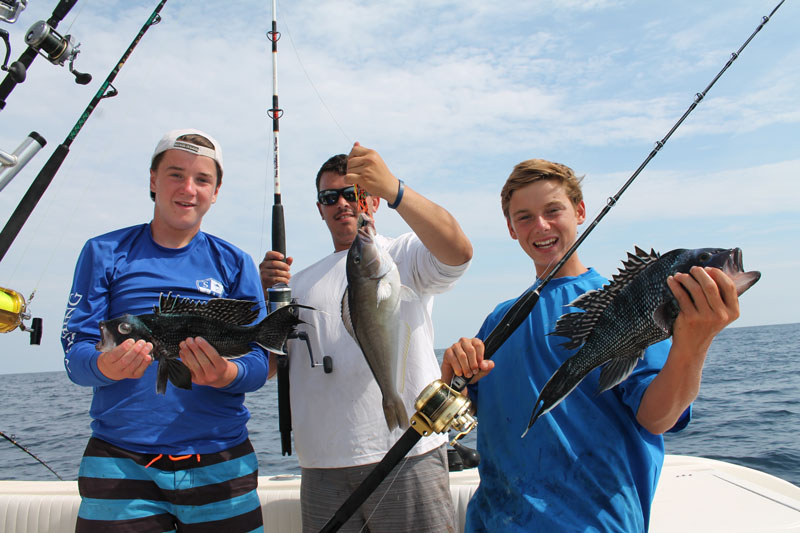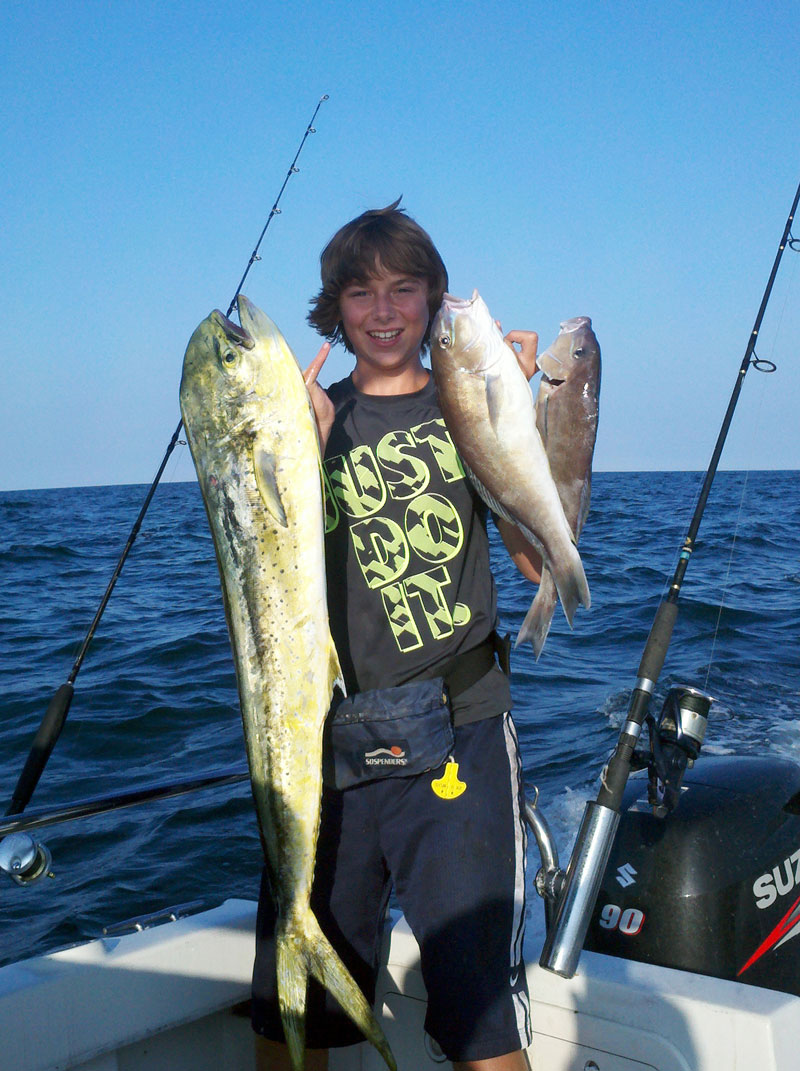DelMarVa's oceanic anglers love targeting sea bass, but with a bit of a longer run they can also put blueline tilefish into the mix. Often, these two species can be found together in huge numbers. Better yet, they're almost always willing to bite. Join us for a short video we shot aboard the My Bait's Dragon, and see how it's done.
When you're ready for a trip of bass 'n blue, use these tactics to find and catch a boat-load.

Finding the Fish
- Hunt in the 200' to 300' range. You'll find this species mix deeper, too, but that means longer runs and heavier weight to reach and hold bottom.
- Always be on the look-out for orange floats as you cruise or troll offshore. Those ones you see at the canyons may be for lobster traps, but in the 200' to 300' range they're fish pots, often set for these specific species. Whenever you see them mark the spot - even if you're trolling for pelagics or running to a completely different area - because the commercial guys don't set them for fun. If you see the floats, you can bet there's live bottom in the area.
- Whenever you're in the magic depth range zoom in close to the bottom and keep an eye on the fishfinder. These fish may be far below and relatively small, but they will show up on-screen. A few marks is all it takes to locate a good area, so don't hesitate to hit the MOB button.
- Any hard or rocky bottom holds these fish, so many areas traditionally thought of as good for trolling or chunking can also hold bass and blueline tilefish. If you have the itch, check them out by using the tactics listed below.
- Look for boats that seem to be bottom fishing in the middle of nowhere. Yes, this is sort of cheating, but other folks are going to do it to you, too. That said, we suggest you mark the spot in your GPS and return a different day; courteous anglers will not pull alongside and crowd the people who found that hotspot in the first place.
Catching Bass and Blueline Tilefish
- Use squid, sea clam, and cut fish for bait. Both species will hit all of these baits without hesitation.
- While bottom rigs work just fine, "octopus" style jigs in the six to eight ounce range work even better. Use the ones with twin hooks and bait them both, so you don't lose your bait immediately if you miss a strike. Drop the jig to bottom, lift it just a foot or two, and hover it in place.
- When using baited jigs, if you feel several strikes but don't hook up you may have lost your bait. At this point, instead of just hovering give the jig a little action. Some days the fish will hit bare jigs, and you don't really need to reel all the way in and re-bait. Other days they don't hit baitless jigs, so if there aren't any strikes within a few minutes, reel up and stick with baited hooks the rest of the day.
- When prospecting new areas and long periods of time between strikes may be likely, rig up a rod with circle hooks on a bottom rig and stick it in a holder. Then, fish another rod with your jig. Even with the circle hooks you'll miss a lot of bites this way, but the second rod provides more good indication of when you're drifting over productive bottom, and when you're not.
- As you fish, keep a rod rigged with a bare 6/0 or 8/0 hook on 40-lb. flouro leader in the rocket launchers. Sometimes mahi-mahi that are cruising by will be attracted by the bits of bait floating away from your boat, and the fish being cranked up. If you spot one, grab that rod, slap a chunk of squid on the hook, and hold on tight.

Max again, this time showing off a mix of mahi and blueline tilefish. - By Staff